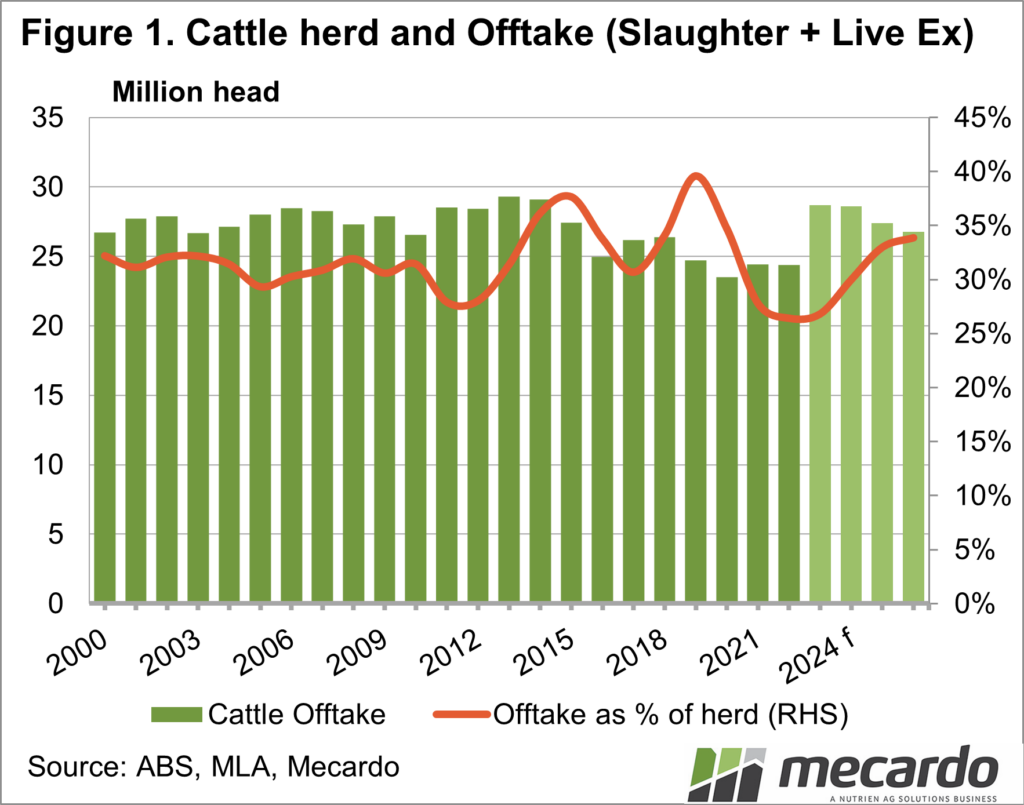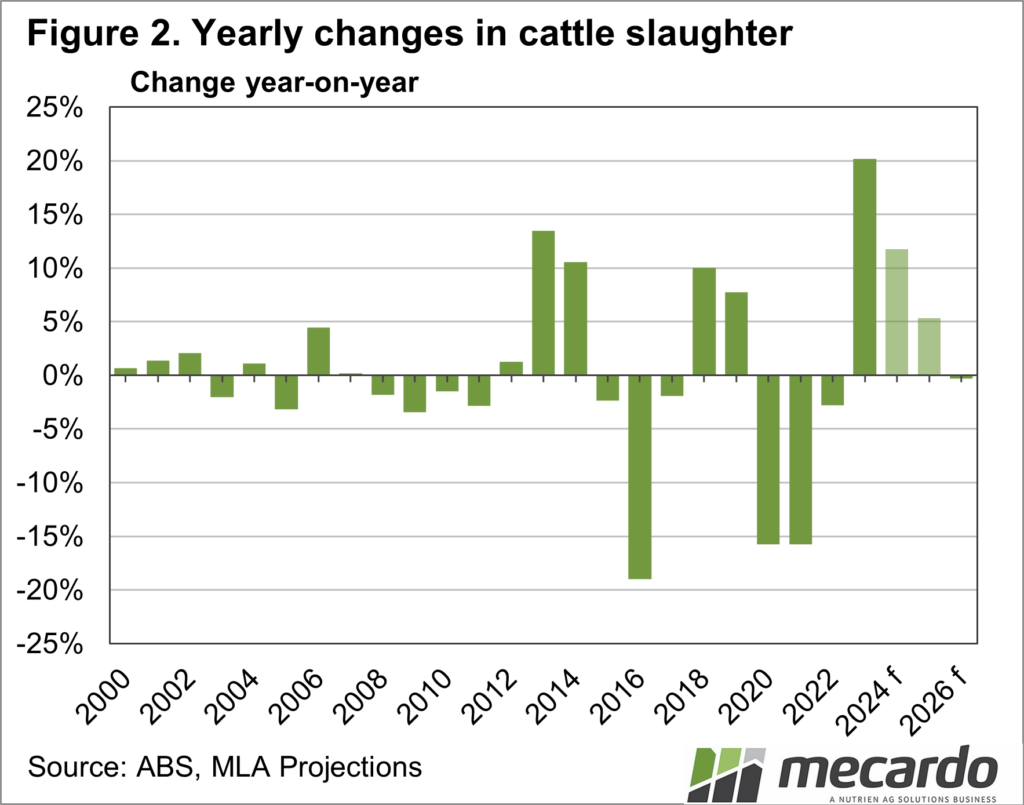The national cattle herd is forecast to dip by just 1% by June of this year, after lifting 4% from 2022 to 2023. MLA projects the herd to be 28.58 million head in 2024, down from 28.7 million last year, and to keep dropping to be 6% lower by 2026. This is a change of tact from their last cattle industry projections, released in June 2023, where the expectation was the herd would grow each year through to 2025.
The expectation that numbers in the north would continue to increase has remained the same, bolstered by another strong wet season; the herd is now predicted to decrease in the south, having moved from a rebuild to a maintenance phase. The price dive in the second half of last year could have brought this move marginally forward. Supporting this outlook is the Female Slaughter Rate (FSR), which averaged 46.6% nationally in 2023 – just below the 47% that usually signifies destocking – but it was slightly above in NSW, at 48%.
Looking to slaughter, 2023 saw a significant 20% jump from the previous year, and that figure is set to rise again in both 2024 and 2025, before levelling out in 2026. After more than 7 million head of cattle were processed last year, MLA expects 7.9 million will be slaughtered this year, a jump of nearly 12%, and to reach 8.3 million in 2025. The herd reaching a more mature stage and therefore increasing turnoff will be the driving factor to this. Carcass weights declined 2% year-on-year in 2023, and are expected to drop further this year and next, however the historically strong slaughter will continue to push beef production higher.
Which takes us to our export markets, one of the key market drivers – the other being weather, which also featured heavily in MLA’s projections, but is a story for another day. Australia’s beef exports rose 26% in 2023, and are forecast to lift a further 20% by 2026, lifting about 200,000 tonnes in 2024 alone. The herd rebuilding phase in the US that many have been waiting for is set to finally come to fruition in the second half of 2024, which will drive up demand for Australian product, both in America and in the markets the US supplies that Australia also has access to. The US exported 15% less beef last year, and the US Department of Ag forecast a further drop of 8% this year.
What does it mean?
MLA’s analyst aggregation price outlook says feeder steer prices should lift by about 5% between now and June, and heavy steers will rise 6% in that period. Promising export markets will help demand, as will restocking support if the autumn break comes when it is meant to. Putting the breaks on that potential upside will be supply, however, which is ample, and how processors handle that will still be dependent on getting the workforce.
Have any questions or comments?
Key Points
- Australia’s cattle herd rebuild has hit maturity according to MLA, and as such numbers are now forecast to level out and start to decrease slightly across the next three years.
- Adult cattle slaughter rose more than 20% year-on-year in 2023, and is set to rise again this year, up a further 11% – pending processors being able to source labour.
- The US herd set to hit its rebuilding phase, opening up the door for improved Australian beef exports.
Click on figure to expand
Click on figure to expand
Data sources: ABS, Mecardo














